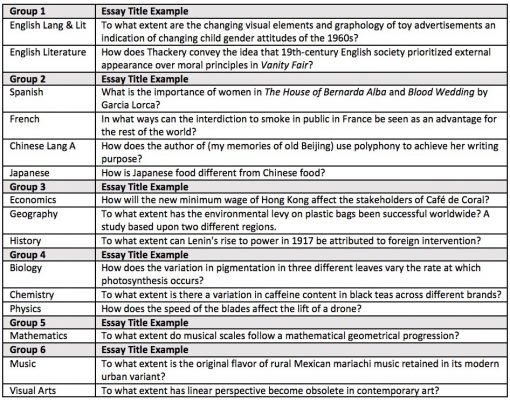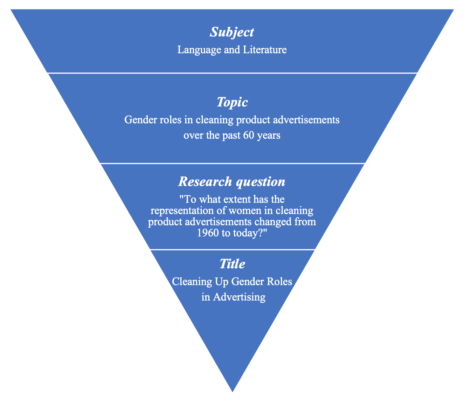Scholarly (Academic) Research
- Everyday research: Googling the nearest pizzeria, the definition of a word, background information for a person or event, etc.
- Academic research:
- Conducted by and for scholars, professors, experts, or professionals
- An in-depth, systematic investigation into a specific topic to increase our understanding
- Participation in an ongoing conversation on a topic
- Often reviewed and refereed by peers
- Some are published in professional or scholarly journals
- Conventional steps of the research process are followed
- Conventional steps of the research process are followed
- Includes components that are standard within the discipline
- abstract, introduction, literature review, methodology, data/analyses/results, conclusion, citations for source materials
The Research Process (overview)
Use these resources to look for a topic:
- Library website > “Resources” pages
- Destiny Discover (Search tool integrating library catalog, websites, & Encyclopedia Britannica subscription)
- Gale School
- Google Scholar
- London Library > JSTOR and other databases
- Discover what other scholars have written about your topic.
- Secondary sources interpret, analyze, or describe information originally presented elsewhere. (Authors of secondary sources did not participate in the event.)
- Types of secondary sources: books, scholarly journal articles, newspapers, magazines, websites, films, TV and radio programs, other published materials
- How does previous research relate to your investigation? How can you build on existing research?
- The IBO does not specify the amount or type of secondary sources you should have. You should aim to include at least 2 scholarly articles.
- Find links to databases with secondary sources on the library website (ex: Destiny Discover, Gale Schools, JSTOR, BCU Lausanne).
- Identify keywords related to your topic to search for secondary sources in a database. Think about your topic in broad and narrow terms. Refine your database search by using the following tools:
- Add another keyword
- Specify a format (book or article)
- Specify a publication date range
- Choose a sub-topic
- Use Boolean Operators (AND, OR, and NOT) and quotation marks
- Use reliable and relevant secondary sources to guide and support your investigation. Create an Annotated Bibliography to help you critically evaluate your sources. (see below)
- This is what your essay is about/what you plan to prove or disprove.
- Your research question will guide your investigation.
- Your research question must be focused and specific.
- Your research question may evolve/change during the research process
- Example Extended Essay research questions:

Source: P. Hoang & C. Taylor. Extended Essay. Hodder Education, 2017.
Select a methodology to investigate your research question by collecting data. (Your choice of method will be influenced by your own values, beliefs, and how you see the world.)
- Quantitative data: Quantity or amount, recorded in numbers (experiments, experimental models).“I believe that truth is objective and can be discovered through the scientific method.”
- Qualitative data: Quality or kind, recorded in words (analysis of an event/work of art/theory, surveys, interviews, observations). “I believe that truth is subjective. Many truths are defined by various communities.”
Select sources/tools/materials for your investigation.
- Primary sources: Original documents/images/speeches/laws/posters/maps; original works of art/ literature/recordings, etc.
- Secondary sources: Books, scholarly studies, authoritative encyclopedias, articles, websites, videos, podcasts, etc.
- Experimental equipment/materials; theorems/proofs/equations; tools for surveys/interviews/ sampling, etc.
Collect and analyze your data. Use your research question as the basis for your analysis.
- What are the results of your investigation?
- Critically evaluate your evidence
- Use your evidence to construct arguments
- How does your evidence answer your research question?
Introduction (1 paragraph)
- State the topic (What’s the problem/phenomenon/issue?)
- Ask the research question
- State why it’s meaningful
- Scope of research, sources to be used, line of argument to be taken
Literature Review (secondary research) (1-3 paragraphs)
- What research has already been done on your topic?
- How does existing research relate to your research question? (similarities, differences, scope, focus, etc.)
- Use an Annotated Bibliography
Methodology (1 paragraph)
Describe how you will answer your research question
- What is the rationale for your choices of sources/theorems/models? Is your analysis designed to help answer your research question?
OR
- What is the rationale for your test or experiment? What steps will you take? Is your investigation designed to produce results that help answer your research question?
Body (primary investigation) (bulk of essay)
- Critical analysis/evaluation of sources/theorems/proofs. How does this evidence help answer your research question?
OR
- Results of experiments, surveys, etc. How does this evidence help answer your research question?
Conclusion (1 paragraph)
- Synthesize the evidence
- Answer the research question based on the evidence presented
- State how this answer is meaningful to me/discipline/society
- State limitations of study, unresolved questions, recommendations for further study
Research tips
- Reliability (Dependability): Can your results be replicated?
- Validity (Credibility): Have you answered your research question?
Your Extended Essay should have both a Research Question and a Title.
- The Research Question should be specific and should focus your research.
- The Title should be short, descriptive, and catchy.

- Keep a list of links, books, and articles you use.
- Make a note of which resources you got your information from, and the page or paragraph where the information appears.
- This information will be used to create a Bibliography, Works Cited list or References list.
- For more information, see Citing Sources. and MLA.
- See the IBO web page: The research and writing process
Annotated Bibliography
- An annotated bibliography evaluates and synthesizes the secondary sources you intend to use to support your paper.
- Provides context and background for your research.
- Demonstrates that you have critically evaluated your sources.
- Helps you use your sources to support your evidence and construct your arguments.
- Bibliographic Information (author, title, date, journal, url or doi, page range)
- Author‘s credentials
- Theme (1-2 sentence synopsis)
- Support for the work (links, data, bibliography)
- Usefulness of the work as it relates to your research topic
- Download a printable Annotated Bibliography Form.
- Use the Annotated Bibliography Example as a guide.
- Synthesize your Annotated Bibliography into a 1-3 paragraph Literature Review, linking existing research to your investigation.
- Your Literature Review can be included in your introduction, or it can appear under a separate heading.
- The title of the heading could be “Literature Review”, “Background”, or “Context” for example.
- The heading should NOT be called “Annotated Bibliography”.
IBO Subject Guides for Extended Essays
Below are links to the IBO’s guidelines for extended essays in each subject area:
Google Scholar
Google Scholar is an index of academic literature. Full texts may or may not be available.
Using Wikipedia Wisely
- Wikipedia is useful for general information, hyperlinks to other resources, and “keywords” related to your topic.
- Academic research requires resources that are more focused and more reliable than Wikipedia articles.
- For a selection of relevant and reliable resources, search the “Resources” pages on this website.


Get Social